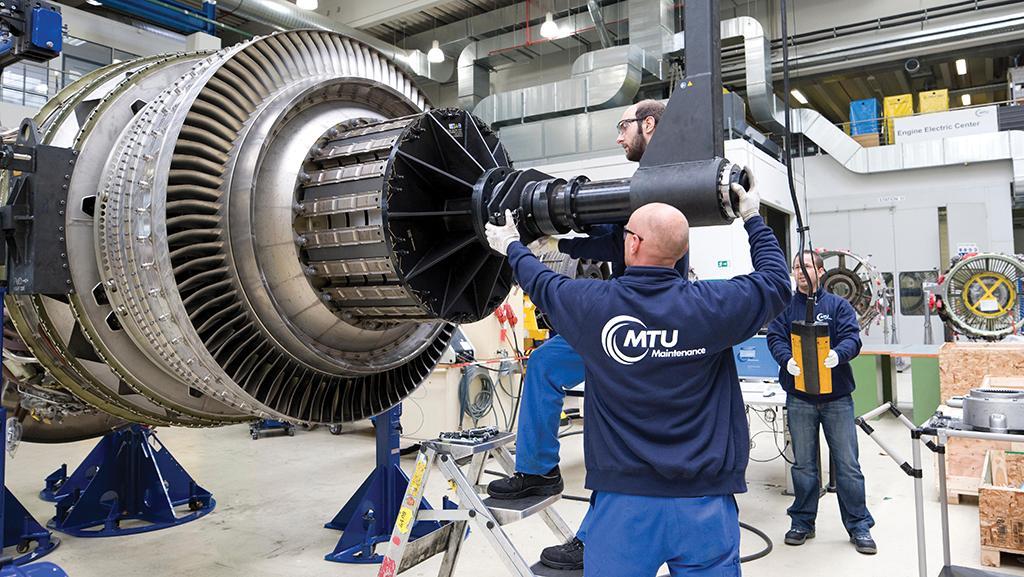Is The Rising Parts Demand A Blessing For Suppliers?

Commercial aviation supply-chain parts volume is growing as airline activity picks up and new-aircraft production rates stabilize, eating up excess inventory that built up as manufacturers adjusted rates downward.
For suppliers, this is mostly good news. But more activity brings near-term concerns as well. Chief among them are bottlenecks created by a jump in demand, from nearly zero a year ago to what some are projecting will soon be historical annual norms in the high single digits. Many suppliers also must factor in the timing and scope that alternative sources such as used and surplus material will play in meeting operators’ needs—and reducing demand for their products.
For many parts suppliers, a second blow came when Airbus and Boeing announced plans to cut new-aircraft production rates on most major programs to align with customers’ quickly changing delivery needs that matched lower near-term demand.
What impact might a cut in production rates have on suppliers? Read the article in full
Meanwhile, airline flight activity is picking up, particularly in narrowbody fleets best-positioned to serve domestic markets leading the recovery.
“While current traffic trends and aircraft activity are mixed, there is a broad consensus that leisure and domestic travel in most regions is accelerating, and we believe this is starting to get reflected in aftermarket and MRO trends,” Canaccord Genuity analyst Ken Herbert wrote in a recent research note.
Find out what rate Canaccord thinks is enough to get the commercial aftermarket back to 2019 levels
Comments from some airlines leading the recovery suggest snags in their aftermarket supply chains. U.S.-based Allegiant Air had more than 30 heavy-maintenance events last quarter.
Republic Airways plans to use lessons learned from the pandemic’s disruption to help mitigate risk when supply chains face disruptions in the future.
Suppliers are taking similar approaches. Flight control and actuation systems specialist Liebherr-Aerospace had risk-assessment plans before the COVID-19 pandemic. The company is revamping them based on fresh lessons learned, Chief Services Officer Alex Vlielander says. Among the more prominent risks the pandemic highlighted are logistical challenges due to a cargo-capacity crunch and smaller suppliers closing because of a lack of orders.
“We’ve gone from an average of about a week to get product shipped from our factories in Europe to 2-3 weeks, at a 30% increase in cost,” Vlielander says. “Now, it’s not just, ‘Do we have the parts? Do we have the raw materials?’”
What else has Liebherr-Aerospace seen? Read the article in full
Further complicating the supply/demand balance is continued uncertainty around used serviceable material (USM) and surplus parts created as airlines simplify their fleets. While some aircraft types, such as the Airbus A340s and A380s and older Boeing 747s, will not see a post-pandemic renaissance, the recovery’s pace and factors such as cargo-conversion demand will affect retirement plans for many narrowbodies and twin-aisles.
Determining how many aircraft will be needed to move people and packages over the next few years requires forecasting abilities that nobody has, so operators and lessors must wait.
Many in the industry agree that retirements will climb and part-outs will follow. Less certain is the timing and asset mix.
Aviation Week projects an average of about 780 retirements of commercial aircraft certified to carry at least 19 seats through 2024—a 10% bump over 2020’s figure (see graph).
More than 5,600 aircraft were neither flying regularly nor stored in April, the Aviation Week Intelligence Network’s Commercial Aviation Fleet Discovery database shows, representing more than 20% of the active fleet (see chart). How many of them return to line-flying will have a significant influence on the supply chain in the coming years.
USM uncertainty, broader logistical challenges such as constrained airfreight capacity and airlines’ desire to keep costs down should create opportunity for another supplier source—parts manufacturer approval (PMA) specialists that provide alternatives to OEM-made material.
Airline bankruptcies, as well as decisions that reduce or eliminate subfleets, create still another parts-supply source—surplus parts pools. Examples include AvAir’s April announcement that it bought 1.5 million consumables and 30,000 rotables from Iberia Maintenance and Engineering.
The aggregate effect of such deals “will temporarily imbalance supply and demand, which will have an impact on all of the other supply and demand streams,” says Boeing Global Services’ vice president of commercial parts, Giovanni Spitale.
This is an abbreviated version of the Inside MRO Article, For Suppliers, Rising Parts Demand Can Be A Mixed Blessing by Sean Broderick. Read the article in full